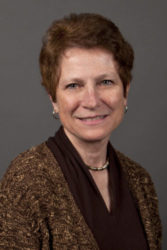by Meg Cotner
On Saturday, October 13 at 2pm, the Western Early Keyboard Association had the pleasure of welcoming harpsichordist Barbara Baird to Portland for a recital of music by 18thcentury women composers. Barbara is on the music faculty of the University of Oregon, where she teaches organ, harpsichord, and piano. She presented a wonderful concert of works by arguably lesser-known women composers that were engaging and delightful.
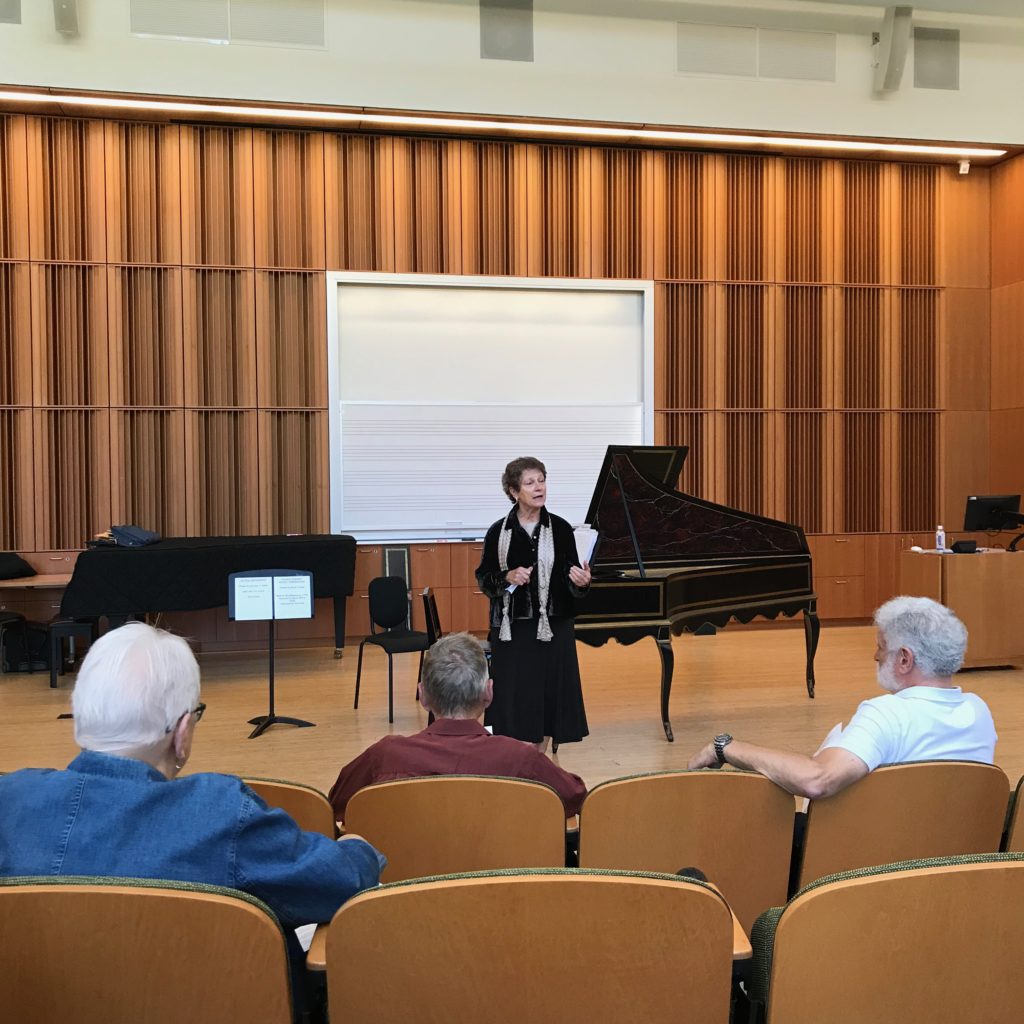 She started off by talking a little bit about the composers, making a point of highlighting the fact that these women were not trying to imitate other composers of their time, but that they each had a distinctive compositional voice of value. She was clearly happy to play these pieces and emphasized that it’s important that they be heard more often.
She started off by talking a little bit about the composers, making a point of highlighting the fact that these women were not trying to imitate other composers of their time, but that they each had a distinctive compositional voice of value. She was clearly happy to play these pieces and emphasized that it’s important that they be heard more often.
As all the works were sonatas, Barbara remarked that she chose to not do the repeats so “we could be done at a reasonable hour.” One wonders if we missed out on some inventive ornamentation on her part, but after hearing the pieces it’s easy to understand why she made that choice. Most pieces were three movements written in a fast-slow-fast set except for the Sonata in A Major by Sophia Dussek, a Scottish composer; that piece was two movements. Barbara warned us that the piece would show off some traditional Scottish harmonies and they were certainly detectable, especially in the second movement, marked Allegretto.
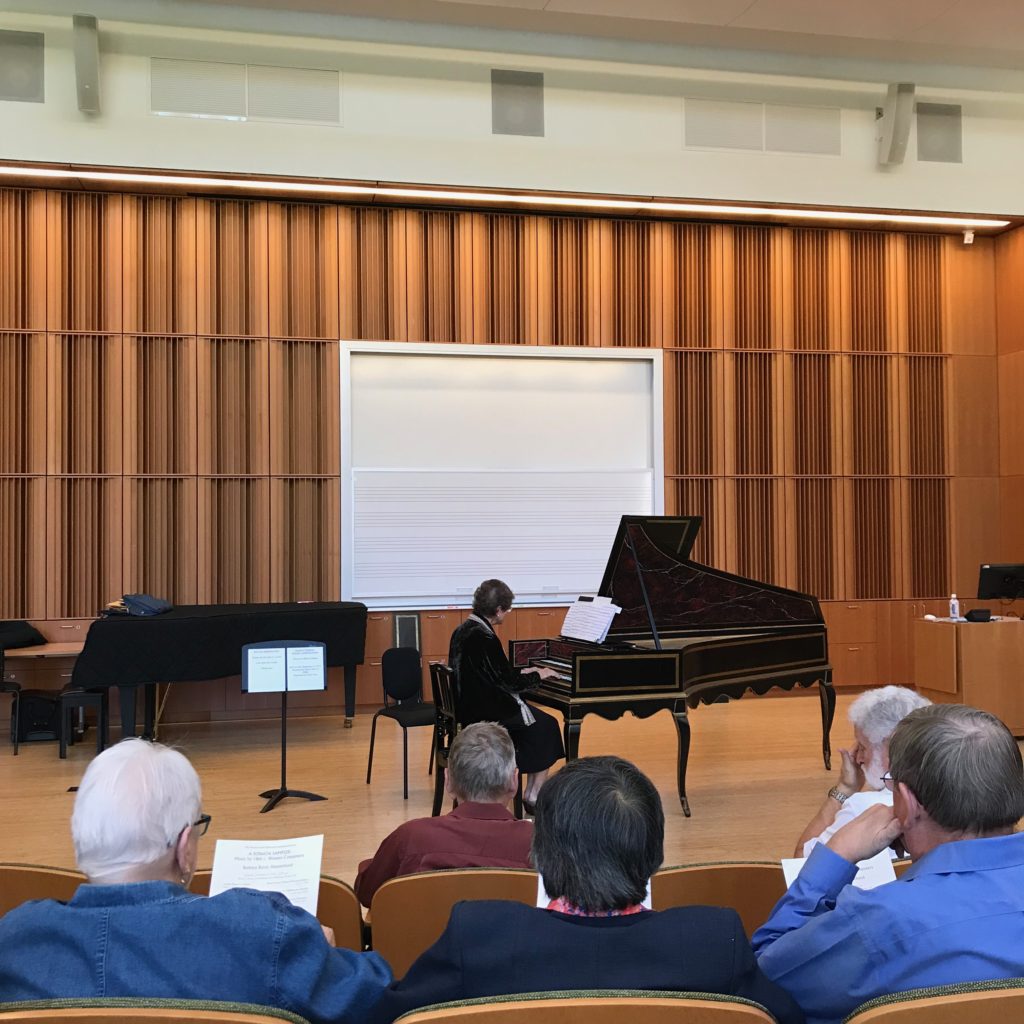 The pieces on the recital were from the latter part of the 18thcentury and they had a noticeable Classical or Rococo feel to them; virtuosity is a presence throughout, and a wide range of the keyboard was put into use. It was thrilling to hear her choices of registration, infused with variety, especially when the lute stop was engaged. This allowed her to display a range of different sounds and textures in either of the two hands. It was an aural extravaganza.
The pieces on the recital were from the latter part of the 18thcentury and they had a noticeable Classical or Rococo feel to them; virtuosity is a presence throughout, and a wide range of the keyboard was put into use. It was thrilling to hear her choices of registration, infused with variety, especially when the lute stop was engaged. This allowed her to display a range of different sounds and textures in either of the two hands. It was an aural extravaganza.
Also: the fact that all the pieces are multi-movement sonatas rather than suites also gives you an idea of their historical placement past the conventionally accepted end of the baroque (1750).
Here is the complete list of composers and their nationalities — they hail mostly from central and western Europe (Italy, France, Austria) and the UK (England and Scotland).
- Maria Teresa D’Agnesi Pinottini (Italian)
- Madame de Villeblanche (French)
- Marianna Martinez (Viennese)
- Maria Hester Park (English)
- Sophia Dussek (Scottish)
- Maria D’Auenbrugg (Viennese)
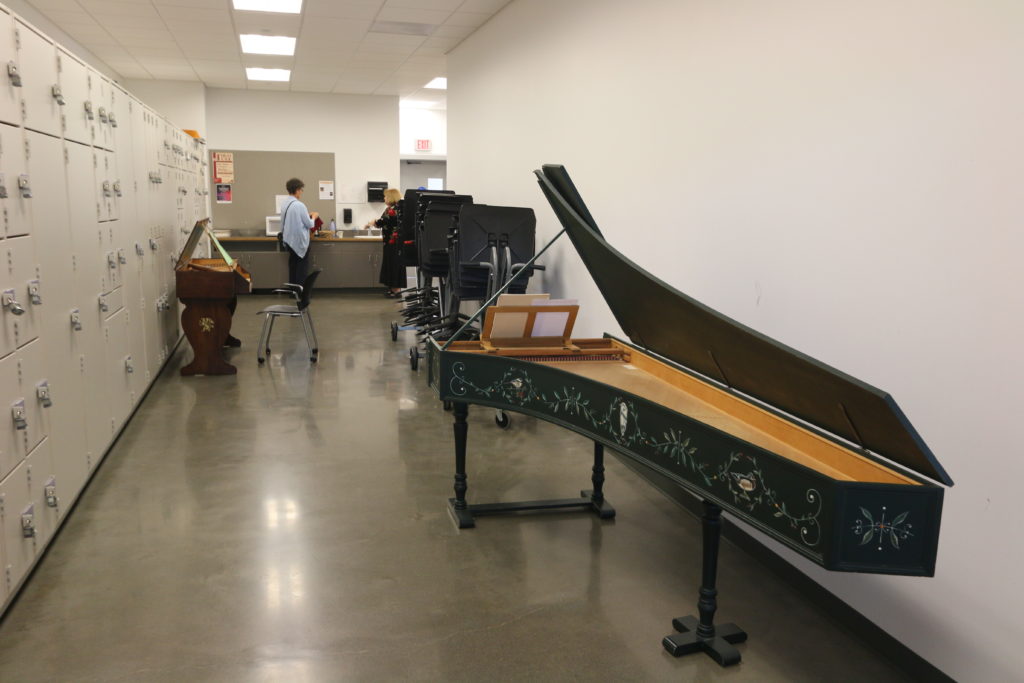 During intermission there was an opportunity to play instruments that are part of Reed’s Early Keyboard Collection. In the hallway next to Room 320 there was the Italian (after Grimaldi, built by Owen Daly) and Virginals (built by Chloe Lewis). After the recital was over, audience members were free to play the Franco-Flemish double (built by Ken Bakeman in 1973, restored by Byron Will in 2002 and retrofitted by Paul Irvin since 2012). Follow this link to read more about the Reed College Early Keyboard Collection.
During intermission there was an opportunity to play instruments that are part of Reed’s Early Keyboard Collection. In the hallway next to Room 320 there was the Italian (after Grimaldi, built by Owen Daly) and Virginals (built by Chloe Lewis). After the recital was over, audience members were free to play the Franco-Flemish double (built by Ken Bakeman in 1973, restored by Byron Will in 2002 and retrofitted by Paul Irvin since 2012). Follow this link to read more about the Reed College Early Keyboard Collection.
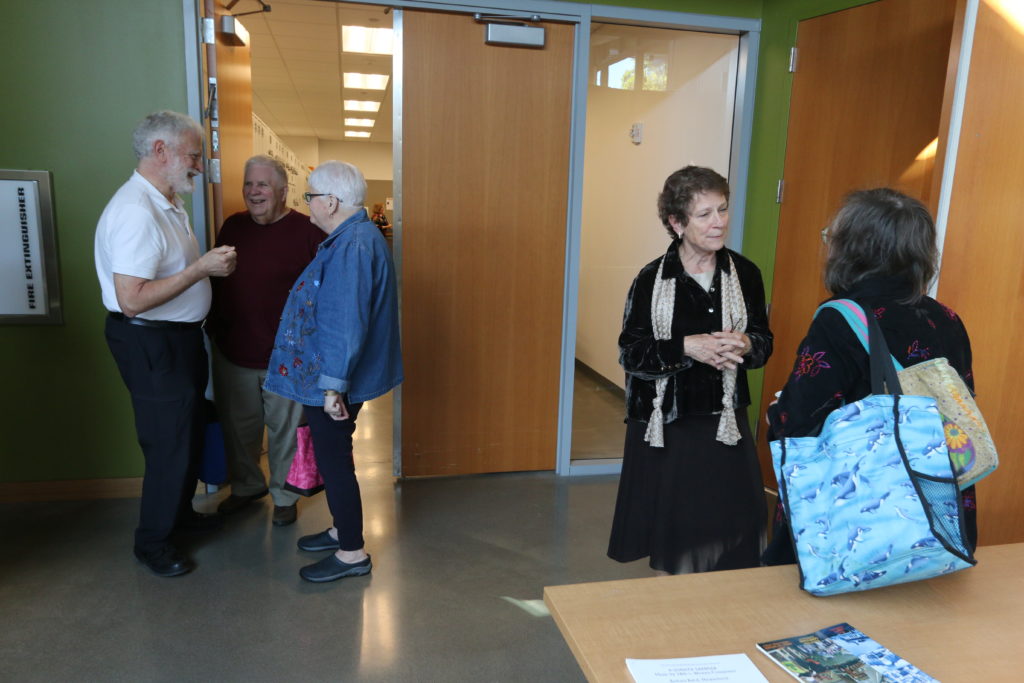 People also appreciated the coffee, snacks and nibbles during intermission and afterwards. Particularly delicious were the local grapes, hand harvested. Overall, people really seemed to enjoy the recital and the opportunity to hear some lesser-known composers and their excellent works.
People also appreciated the coffee, snacks and nibbles during intermission and afterwards. Particularly delicious were the local grapes, hand harvested. Overall, people really seemed to enjoy the recital and the opportunity to hear some lesser-known composers and their excellent works.
You can listen to audio recordings of the performance here:
Pinottini, Villeblanche, and Martinez
Park, Dussek, and D’Auenbrugg
